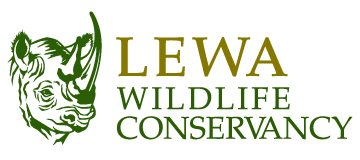At the workshop in Lewa Conservancy, an extraordinary transformation usually takes place as vehicles morph into camouflaged beasts, harmoniously blending with the breathtaking landscape. Here, automotive artists work their magic, customising vehicles to adhere to the Lewa Standards, a code that governs both aesthetics and conservation. According to the standard, only 4×4 vehicles draped in hues of green and brown are allowed within the conservancy.
The choice of 4×4 vehicles enables efficient navigation through challenging terrain commonly found in conservancies, providing the necessary mobility for conservation activities, while the camouflage colours ensure that the vehicles blend harmoniously with the natural surroundings, minimising visual disruption. By adhering to this requirement, the conservancy aims to maintain a balance between effective transportation and preserving the ecological integrity of the area.

A customised conservancy vehicle
The process of tailoring vehicles to meet the demands of the landscape is typically done behind the scenes. Today we unveil the efforts involved in creating a customised masterpiece that meets the rigorous standards set by Lewa. A process that takes place within the workshop, which operates under the purview of the Operations Department.
The journey begins by stripping the vehicle down to its bare essentials, removing unnecessary components and creating a blank canvas for the customisation process. Next, a sturdy cage made of steel tubing is meticulously fabricated and integrated into the vehicle’s structure. This supports the roof and side canvas which provide shade and protection from the elements during operations in the Conservancy.

Under construction: A steel tubing frame
A special bull bar is designed and installed on the front end of the vehicle. This bar offers additional protection to the vehicle’s front grille, headlights, and bumper, safeguarding them in case of collisions or off-road hazards.

The sturdy bull bar
A Conservancy’s vehicle is not quite complete without a snorkel being fitted onto the vehicle’s air intake system. This modification raises the air intake point above the roofline, allowing the vehicle to draw in cleaner and cooler air, minimising the risk of dust, water, and debris entering the engine.

A snorkel is installed on the right side of the truck
In addition to the previous steps involved in constructing a customised Conservancy vehicle, there is one important feature to highlight: the installation of side steps. These steps are added to facilitate easy embarking and disembarking for passengers, considering the elevated nature of the vehicle.

Installation of sidesteps
The back of the vehicle is also equipped with spare wheel carriers, ensuring that extra wheels are readily available for emergencies that are inevitable when traversing the rugged terrain of the northern Kenya landscape.

Some of the final touches
Customising a conservancy vehicle is an intricate process that combines artistry, engineering, and a deep understanding of the landscape’s requirements. From reinforcing the vehicle’s structure to incorporating practical features, each step is essential in creating a customized masterpiece that seamlessly integrates with the natural surroundings.
When the customisation is complete, these remarkable machines are ready to traverse the rugged terrain of Northern Kenya. Their verdant and earthy coats enable them to move stealthily, becoming one with the environment they inhabit.







